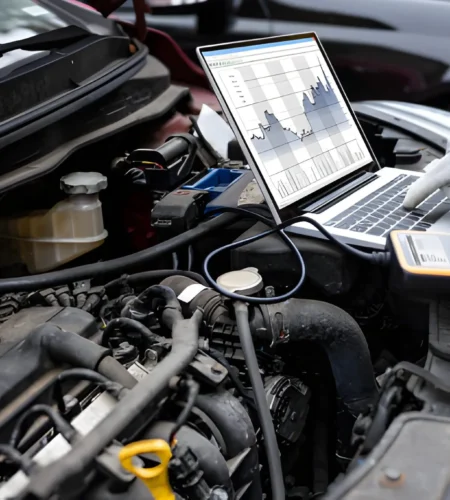Introduction
Selecting the appropriate auto parts ensures your car remains dependable and safe. The market provides a dizzying array of options, making it even more vital that you choose compatible, reliable, and genuine parts. Whether you need to perform a routine replacement or emergency repair, knowing how and where to buy Nissan parts or any other type of auto components can significantly improve your vehicle’s performance for years to come.
This comprehensive guide equips car owners and enthusiasts with the knowledge to make wise purchasing decisions. By following these steps, you’ll protect your investment and ensure your vehicle confidently handles every mile.
- Understand your vehicle’s specifications to ensure part compatibility.
- Weigh the pros and cons of OEM versus aftermarket parts.
- Prioritize quality and verify the authenticity of parts.
- Consult professionals when in doubt.
- Be cautious of counterfeit products and always check return policies.
In the ever-evolving automotive market, finding a trustworthy partner is essential. Local options such as auto dealers Tampa FL, can provide access to certified parts and knowledgeable professionals, offering peace of mind and ongoing support.
Understand Your Vehicle’s Specifications
Before seeking any auto part, obtain precise details about your automobile—make, model, year, and engine type are all essential. The owner’s manual or the vehicle identification number (VIN) can provide this information. This step ensures you avoid costly mistakes and that every part you purchase is a perfect fit for your specific vehicle.
OEM vs. Aftermarket Parts
Auto replacement parts generally fall into two main categories:
- OEM (Original Equipment Manufacturer) Parts: Sourced directly from your vehicle’s manufacturer, OEM parts guarantee compatibility, durability, and peace of mind with their dependability—though typically at a higher price.
- Aftermarket Parts: These parts are produced by third-party manufacturers. They are often more affordable, and their design may enhance performance or offer unique features. However, it’s critical to research thoroughly as quality can vary substantially.
The choice between OEM and aftermarket parts depends on your budget, intended use, and desired peace of mind. For further guidance on quality standards, consider reading Edmunds’ comparison of aftermarket versus manufacturer car parts.
Verify Part Compatibility
Even a top-brand part will cause problems if it isn’t compatible with your vehicle. Always cross-check part numbers, dimensions, and specifications against your vehicle’s needs. Most reputable auto part retailers provide online compatibility tools, allowing you to input your car’s details and confirm fitment. This step protects you from malfunctions and additional expenses.
Research Brand Reputation
Not all auto part brands are created equal. Opt for well-established companies with proven records of reliability and trustworthiness. Online reviews, ratings, or recommendations from trusted mechanics can steer you toward reputable brands. Avoid generic or unknown brands, as these parts might save money upfront but risk safety and long-term expenses. See the NerdWallet article on OEM vs. aftermarket parts for more in-depth advice.
Inspect Part Quality
Always inspect for damage, excessive wear, or corrosion when purchasing, mainly second-hand or refurbished parts. For electronic items, ensure they have been tested and have a performance guarantee. Legitimate online sellers should provide highly detailed descriptions and clear images. Always prioritize new parts for critical systems such as brakes or suspension, as your safety could be at risk.
Compare Prices and Warranties
Price shopping can save you significant money—but don’t sacrifice quality for savings. Compare multiple stores, OEM sources, and reputable online marketplaces. Reviewing warranty offers is equally vital; a strong warranty demonstrates a company’s confidence in its product. Steer clear of parts with no warranty, as this may indicate a lack of reliability.
Seek Professional Advice
If you are uncertain about a particular purchase, always contact your local mechanic or auto parts specialist. Their expertise can guide you toward the right product and help you avoid common pitfalls, especially with complex systems like engines or transmissions. Their insight may also lead to hidden deals or better options for your vehicle and driving habits.
Avoid Counterfeit Parts
The risk of purchasing counterfeit parts is real, posing dangers to your car’s performance and safety. Only buy from authorized dealers and established retailers. Genuine parts have security seals, precise packaging, and identifiable certification marks. If something seems questionable, ask for documentation or proof of authenticity.
Consider the Return Policy
Confirm the seller’s return and exchange policy before purchasing. This is particularly critical for online purchases, where you can’t physically inspect the part beforehand. A flexible policy gives you peace of mind that you can efficiently address fitment issues or defects, reducing the risk of wasted money and time.
Plan for Installation
Finally, decide whether to install the part yourself or hire a professional. While minor components—like air filters or wipers—are DIY-friendly, complex systems demand expert installation. Include installation costs in your budget to avoid surprises and ensure every part functions safely and efficiently.
With these steps, you’ll be well-prepared to choose auto parts that boost your car’s safety, reliability, and longevity. Whether purchasing for preventative maintenance or a significant repair, well-researched decisions pay off in the long run, keeping you and your vehicle on the road confidently.
Also Read-iPhone Jokes: Hilarious Tech Humor to Brighten Your Day


Comments